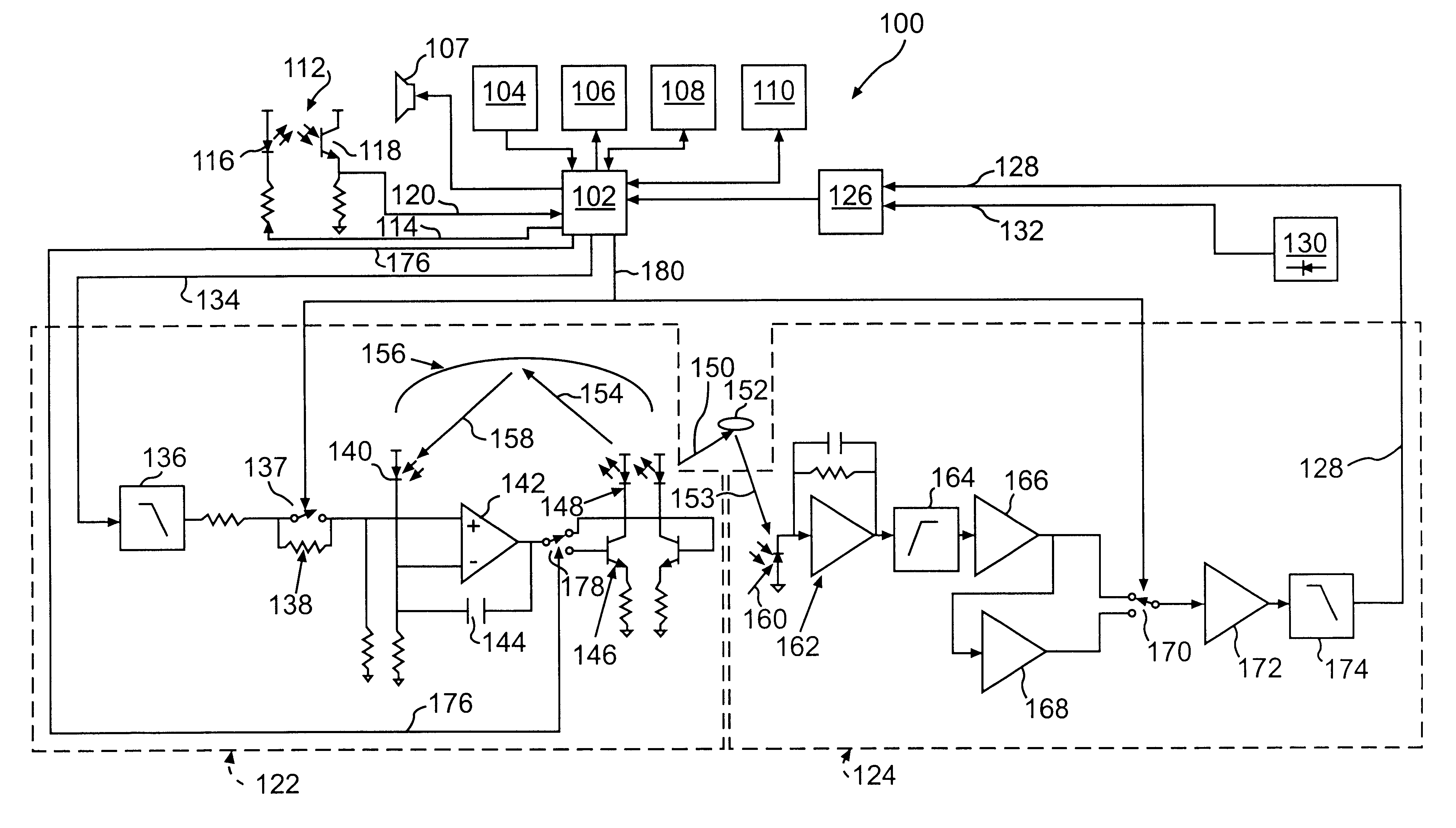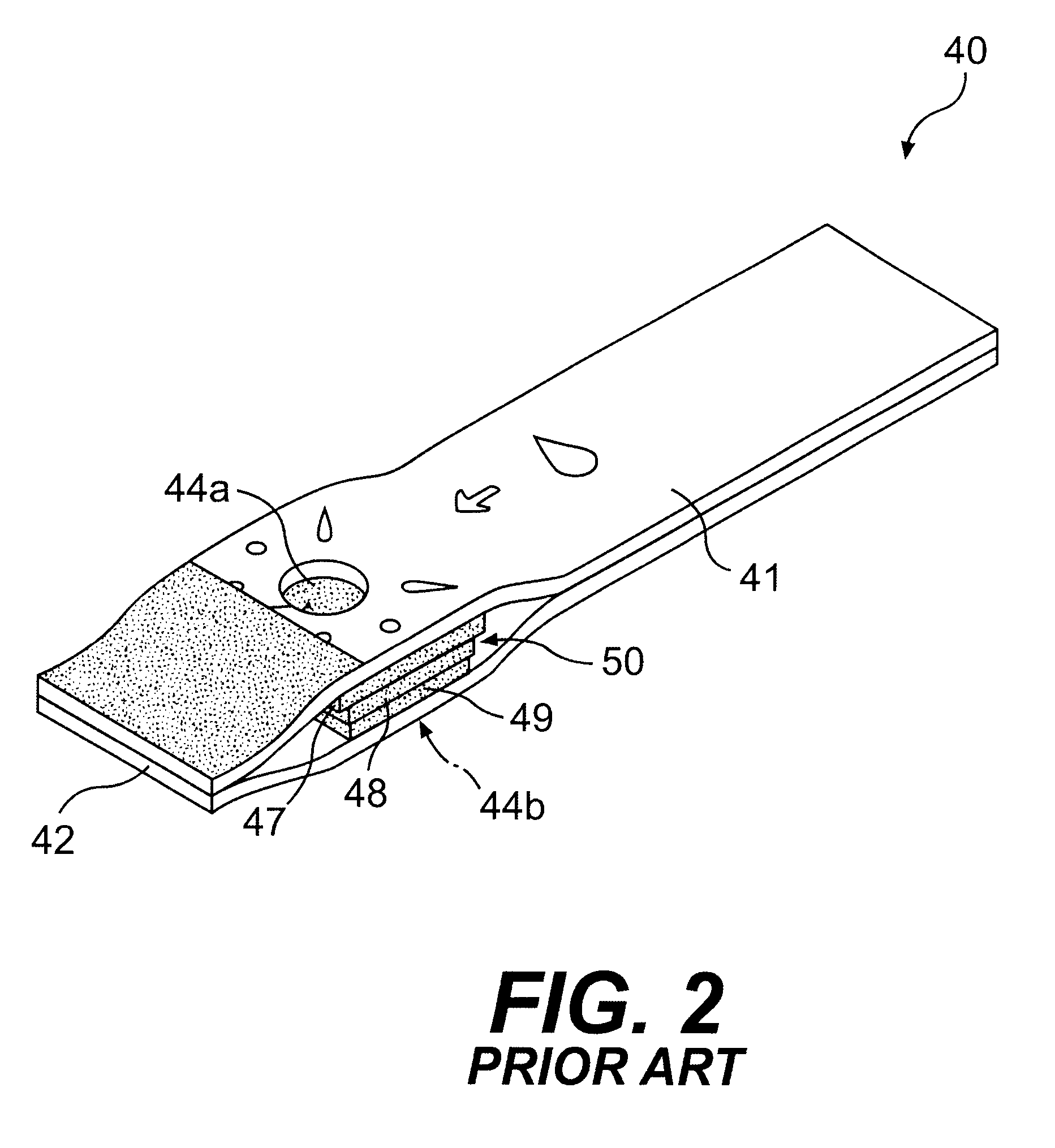Method of strip insertion detection
a strip and detection method technology, applied in the field of strip insertion detection, can solve the problems of long-term complications, diabetics can have abnormally high blood sugar levels known as hyperglycemia, and impaired ability to regulate glucose levels in their blood
- Summary
- Abstract
- Description
- Claims
- Application Information
AI Technical Summary
Problems solved by technology
Method used
Image
Examples
Embodiment Construction
1. Field of the Invention
The present invention relates generally to methods of measuring the concentration of an analyte in a fluid sample. More particularly, this invention provides method and apparatus for detecting the presence of a test element, such as a dry chemistry strip, in a meter device.
2. Background of the Invention
Monitoring analytes such as glucose, cholesterol, intoxicants, and other constituents is frequently desirable in fluids, such as blood, plasma, blood serum, saliva, urine, and other biological fluids. In healthcare applications, such monitoring affords the opportunity to make rapid diagnoses of a patient's condition and to take prophylactic or therapeutic measures necessary for maintaining proper health.
One such healthcare application that has benefited tremendously by analyte monitoring in recent years is the treatment of diabetes. Diabetics suffer from an impaired ability to regulate glucose levels in their blood. As a result, diabetics can have abnormally h...
PUM
| Property | Measurement | Unit |
|---|---|---|
| average voltage | aaaaa | aaaaa |
| frequency | aaaaa | aaaaa |
| frequency | aaaaa | aaaaa |
Abstract
Description
Claims
Application Information
 Login to View More
Login to View More - R&D
- Intellectual Property
- Life Sciences
- Materials
- Tech Scout
- Unparalleled Data Quality
- Higher Quality Content
- 60% Fewer Hallucinations
Browse by: Latest US Patents, China's latest patents, Technical Efficacy Thesaurus, Application Domain, Technology Topic, Popular Technical Reports.
© 2025 PatSnap. All rights reserved.Legal|Privacy policy|Modern Slavery Act Transparency Statement|Sitemap|About US| Contact US: help@patsnap.com



